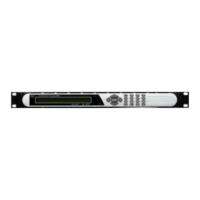
Do you have a question about the Cisco D9858 and is the answer not in the manual?
Acknowledges trademarks used in the document, including Cisco and Dolby.
States Cisco's disclaimer for errors and omissions, and rights to change content.
Provides essential safety guidelines for operating the product, including reading instructions and heeding warnings.
Covers electrical safety, grounding, ventilation, power sources, and avoiding water exposure.
Details safe handling, attachments, lightning protection, power line proximity, and object/liquid entry precautions.
Identifies the guide's purpose and the prerequisite knowledge for using the documentation.
Introduces the D9858 transcoder, its capabilities, applications, and primary features.
Explains how software updates are managed for the D9858 transcoder via the Ethernet interface.
Guides on connecting the D9858 transcoder to devices and configuring network settings.
Details acquiring RF signals and assigning program channels, including tuning parameters.
Emphasizes qualified personnel for installation and instructs on power connection and safety.
Covers rack mounting, cooling, grounding, and physical installation procedures for the transcoder.
Details the function and physical type of each connector on the rear panel of the D9858 transcoder.
Guides on connecting various signals like RF, ASI, Video, Audio, Alarm, and RS-232 interfaces.
Describes the front panel components including LCD, keypad, LEDs, and navigation controls.
Explains how to lock the front panel keypad and details the startup screen display.
Covers navigation through Main, Status, and Setup menus for device configuration.
Provides instructions for accessing the D9858's web interface and an overview of its structure.
Guides on configuring RF and ASI inputs, SI receive parameters, and channel selections.
Details configuration of video parameters, captions, subtitles, and audio settings.
Covers ASI output, MPEGoIP output, DPM settings, and transcoder configurations.
Details system settings like IP, SNMP, Alarms, Time/Clock, and Front Panel configurations.
Provides information on contacting support, viewing logs, usage counters, and versions.
Lists and explains alarm/warning messages, their causes, remedies, and severity.
Provides information on replacing the transcoder's power supply, emphasizing contacting support.
Details technical specs for L-Band input, including system compatibility, demodulation, and LO stability.
Covers specs for video inputs, outputs, compression formats, resolutions, and analog outputs.
Lists specs for ASI, MPEGoIP, and MPE outputs, including connector types and bit rates.
Outlines specs for Ethernet, RS-232, Alarm interfaces, and power requirements.
Lists default parameter values and available lock levels for protecting transcoder settings.
Details preset DPM parameters for output modes like No Output, Passthrough, and Transcoding.
Lists safety standards (CAN/CSA, UL, IEC), ESD precautions, and EMC requirements.
Contains the formal declaration of conformity with relevant directives and standards.